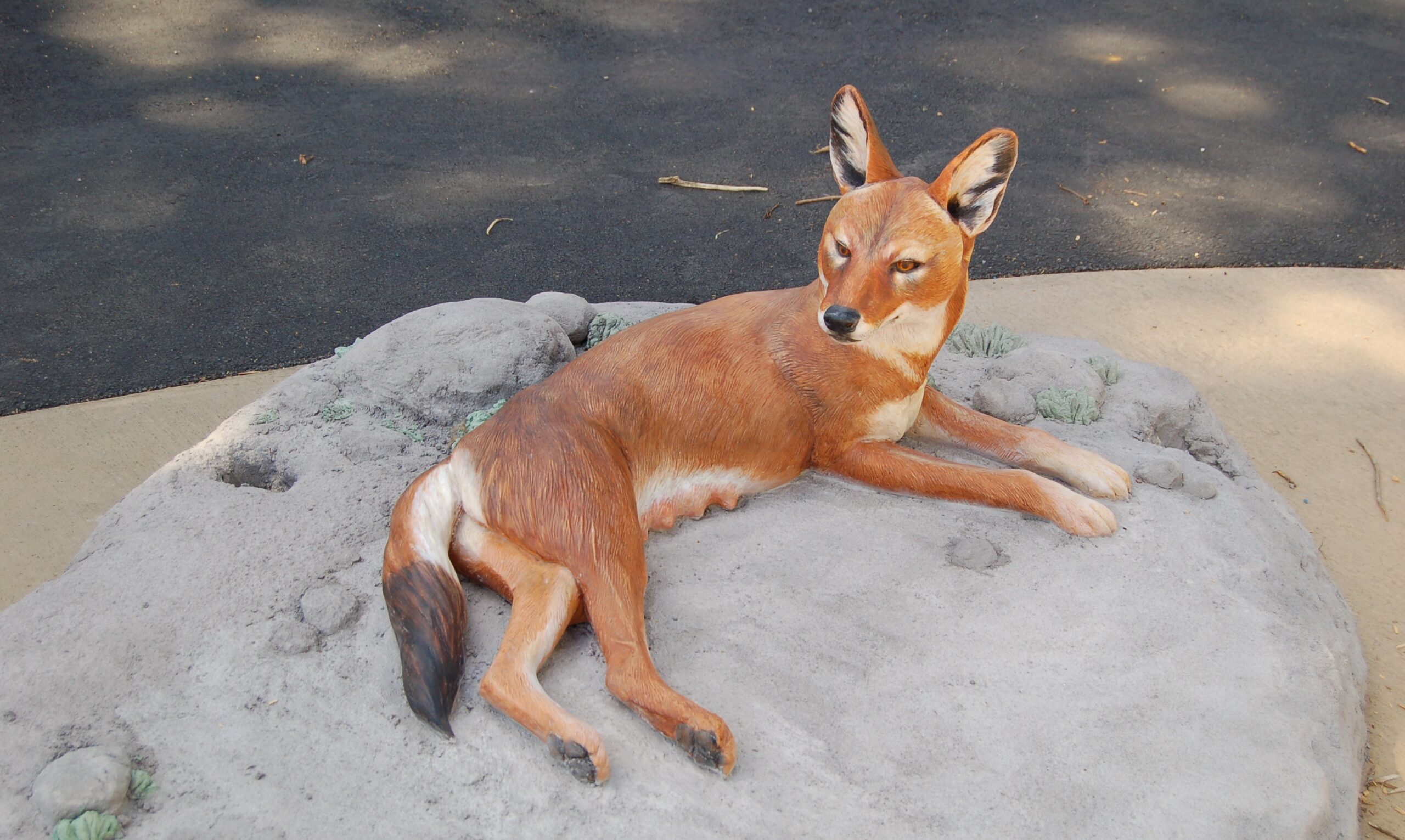Ethiopian wolf
Canis simensis

Fascinating Facts
- They are the rarest and most endangered canid in the world, as well as Africa’s most endangered carnivore.
- Other names include Simien fox, Ethiopian jackal, and cuberow.
- Their greatest threat is rabies and distemper caught from domestic dogs in the area, followed by habitat loss, road kills, and shooting.
- Ethiopian wolves live in tight packs of 3-13 adults, and only the dominant female will breed, usually with neighboring males.
- The group patrols their territory together at dawn, noon, and dusk, rests together at night in the open, but each wolf hunts individually.
Habitat/Diet
Ethiopian highlands, above the tree line at about 3,200 meters. Wolves utilize all Afroalpine habitats, but prefer open areas with short grasses along flat or gently sloping areas with deep soils. Unlike other canids, these wolves are highly specialized hunters, eating mainly rodents. Their primary prey species is the big-headed mole-rat.
Status in the Wild
Endangered – IUCN 2013
Range
They are found exclusively in seven isolated mountain enclaves in the highlands of Ethiopia.
Location in the Zoo
Mammals Zone of the Sculpture Learning Plaza
